A little while ago I bought a SNO-T sextant on a local auction site, not because I did not have one (I have two), but because the price was too attractive to miss. I found there were two major and one minor problems with the instrument: one hinge had torn from the the case, one shade was a “foreigner” taken from an SNO-M sextant and the star or Galilean telescope was out of alignment. Some may not think the damage to the case to be important, but a sextant is an instrument of precision and if it is not contained safely in its case it may suffer unnoticed damage. Figure 1 shows that a cure could not be effected with filler or “builder’s bog”. I had to saw and chisel away the damage down to fresh wood and glue in a piece of close grained wood .
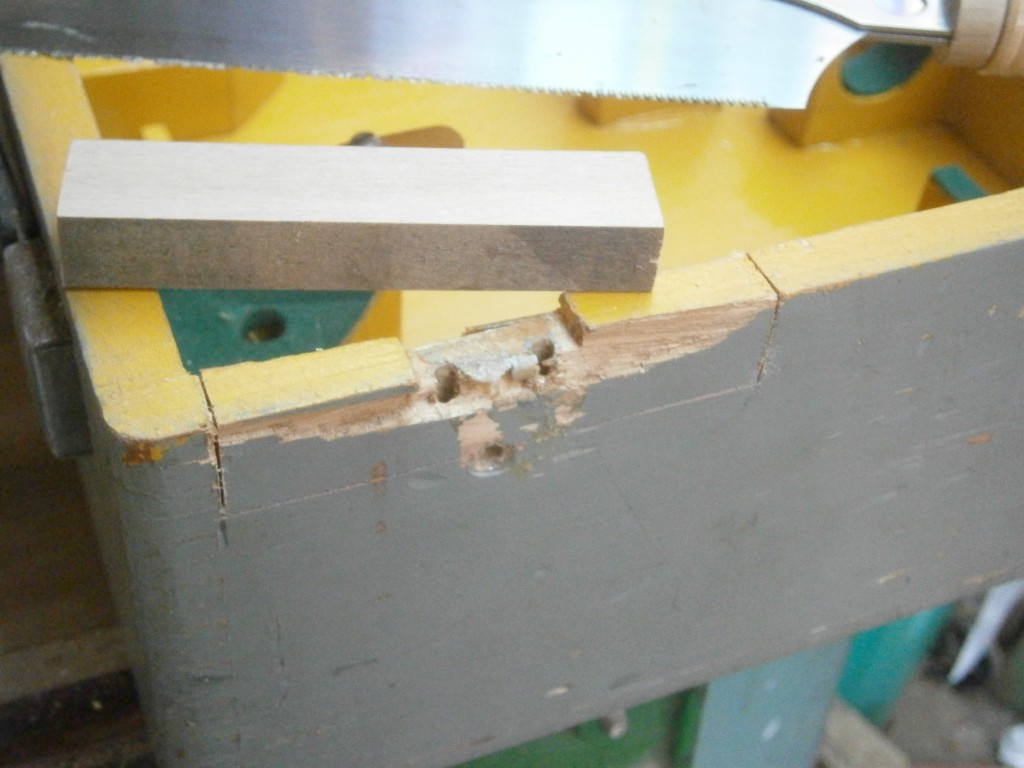
Figure 2 shows the result, with screw holes marked out and pilot holes for screws drilled.
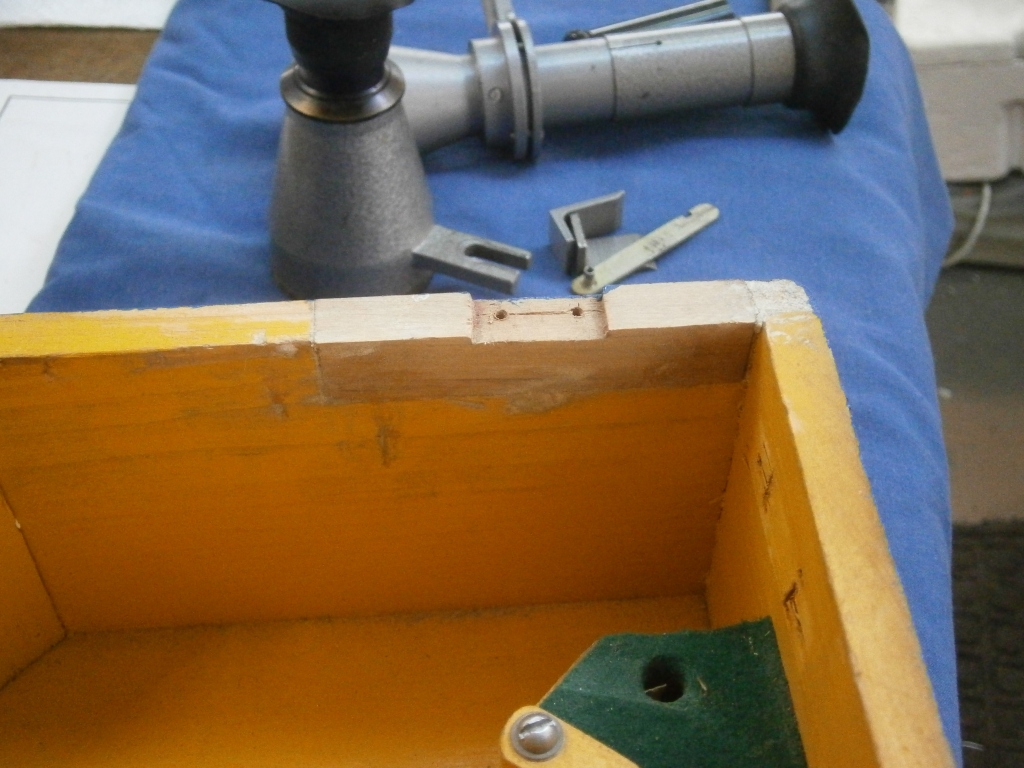
As a later photograph will show, the designs of the shades for the SNO-T and the SNO-M are very different, so I elected to make a new bracket and use the glass from the SNO-M. I began by marking out a piece of aluminium alloy plate and boring a hole to make a seat for the glass.. Rather than swaging the glass into place, I planned to use modern two-part epoxy glue.
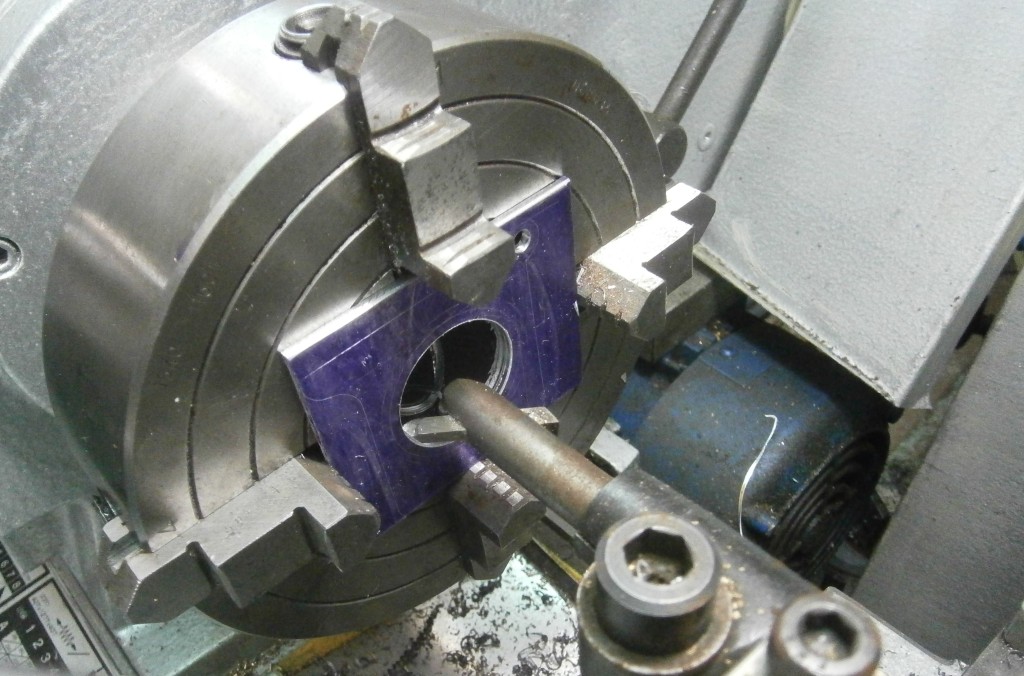
The next step was to saw the outline of the blank to shape with a piercing saw (Figure 4) and finishing by filing.
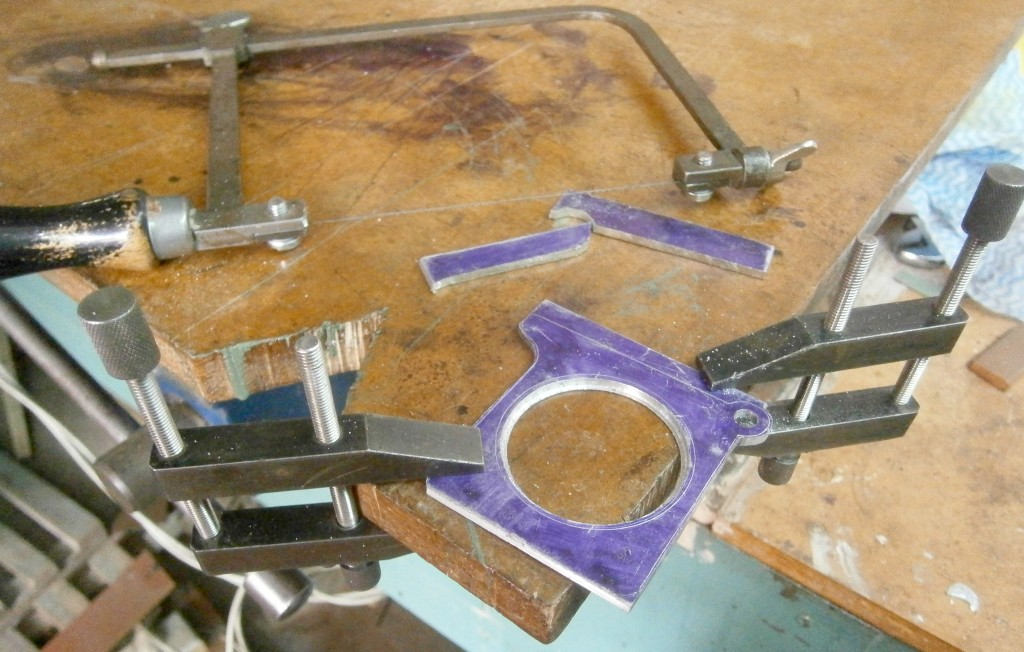
Figure 5 shows how “cheaters” are used to guide the file when making tight curves in soft metals like aluminium and brass. They are simply hardened cylinders held in place with a nut and bolt and when a gently used file begins to skate over them, the soft metal has been guided into shape.
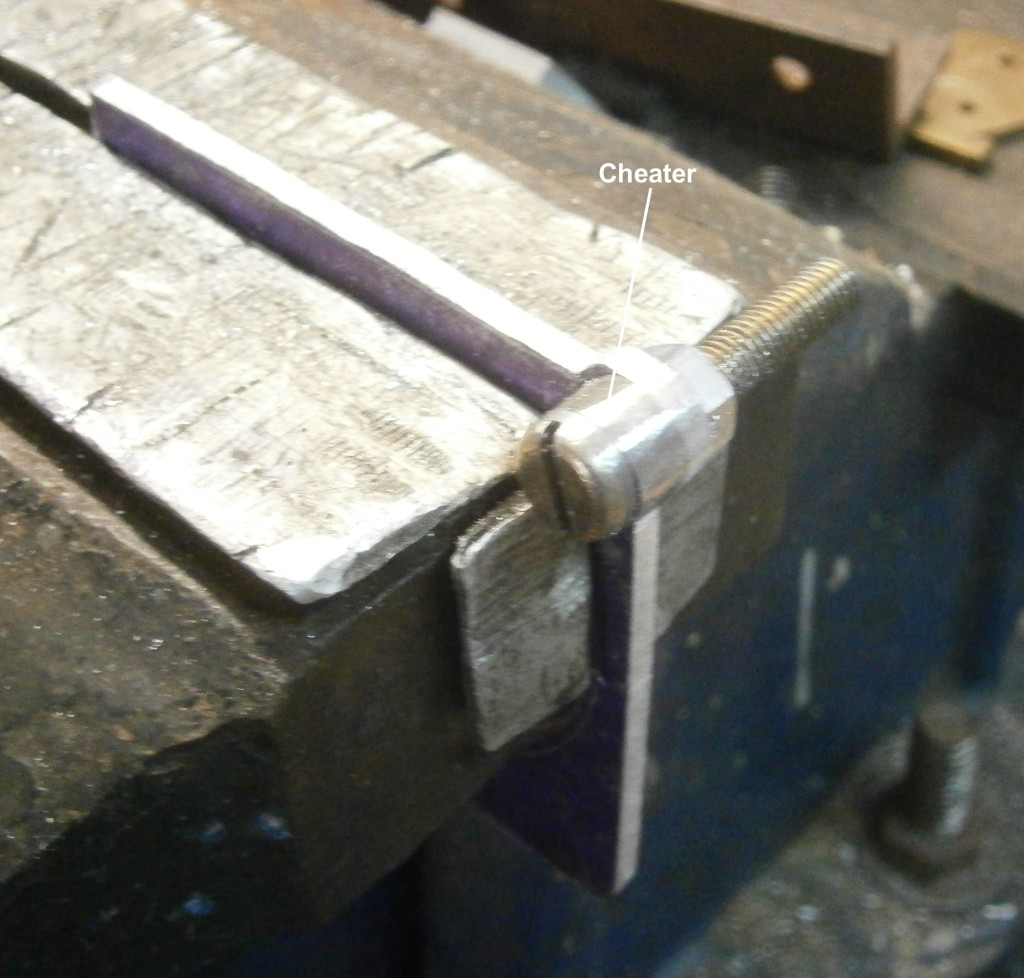
All that remained was to ease the glass into place with a tiny smear of glue to hold it there and paint it to match the rest of the sextant. “Hammerite” hammered grey paint gives a close match. Figure 6 shows the completed shade.
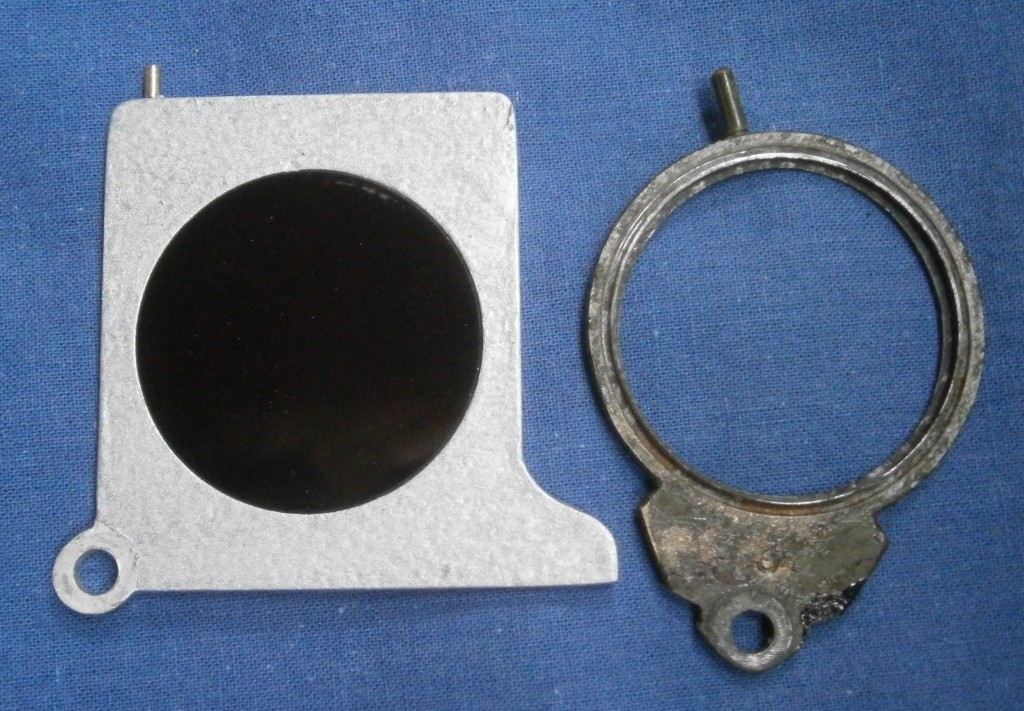
The “star” telescopes of most sextants are not adjustable for collimation. The word appears to have come from the mis-copied Latin word “collineare”, to direct something in a straight line according to the Oxford Latin Dictionary. In the context of sextants, it means to direct the optical axis of the telescope parallel to the plane of the arc. Except at high altitudes, small errors are of little importance in ordinary navigation. For example at a reading of 60 degrees, a 45 minute tilt of the telescope results in an error of about 20 seconds, an amount which would normally be swamped by other errors. However, in the days of lunar distance observations and checking chronometers by celestial observations, such an error would be significant, and the higher powered inverting or Keplerian telescopes were normally provided with a means of collimation.
The easiest way to check collimation is to check that the face of the objective lens cell is at right angles to the plane of the frame of the sextant, a shown in Figure 7, where there is an obvious wedge of light showing,
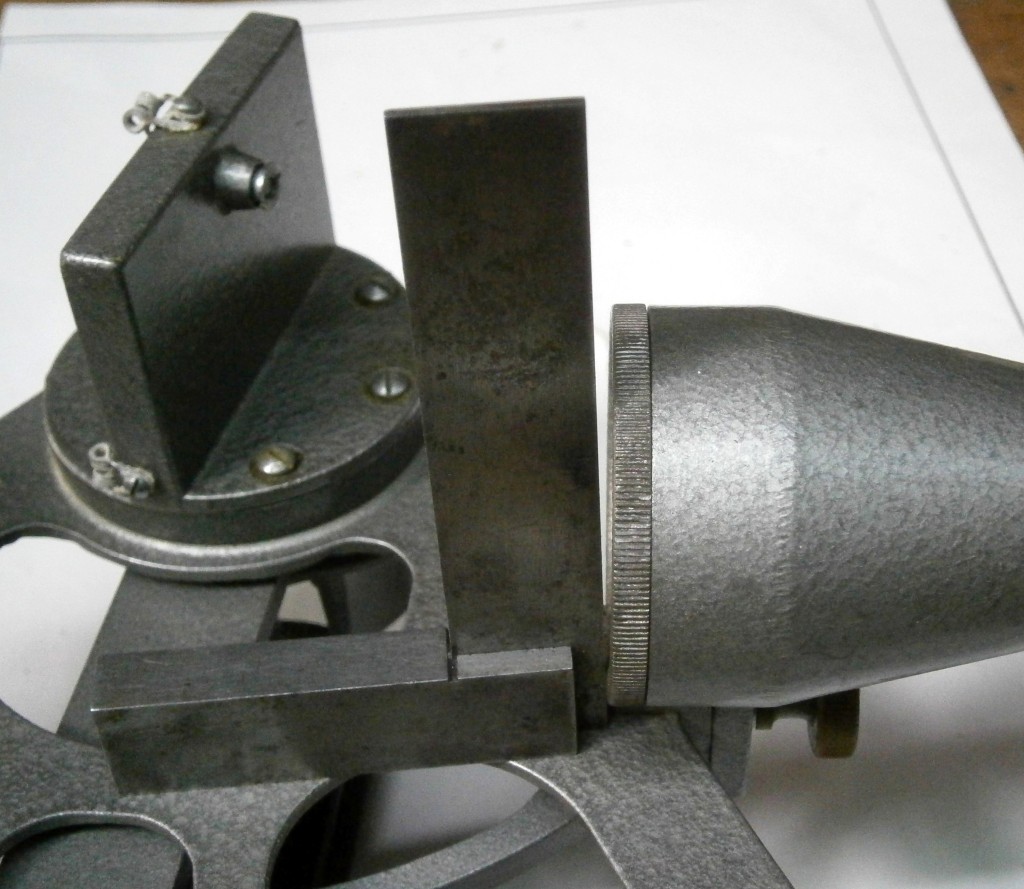
The rising piece of the SNO-T telescope is a casting that is integral with the body of the telescope and one would be ill-advised to attempted to correct the error by bending it, as aluminium castings have an unfortunate tendency to give no warning that they are about to break. Instead, it is simpler and safer to slowly and carefully file the underside of the telescope bracket, where there is usually plenty of metal, and this is what I did. Figure 8 shows that the error has been corrected.
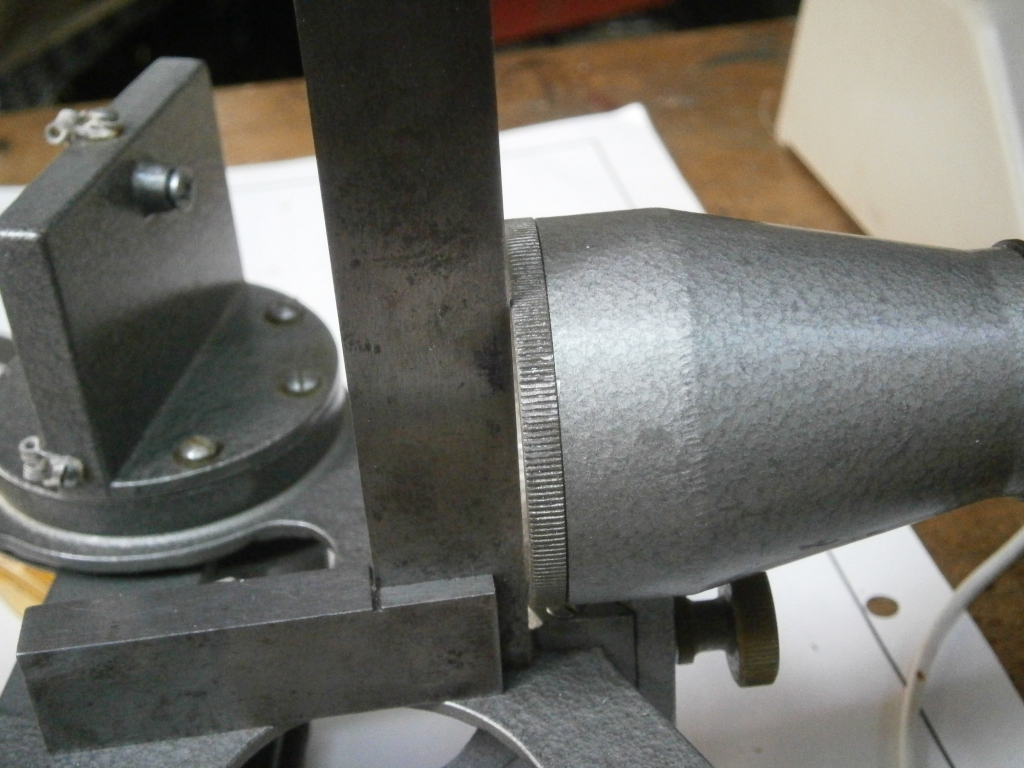
I have dealt with the rest of the overhaul in my manual on the construction, repair and maintenance of the SNO-T Sextant, which is still available for purchase (see post for 22 November 2008 for details). Figure 9 shows the instrument in its repaired case. The original colour of the case was light grey, and as it had become battered during its life since 1975, and I had some very tough gloss blue paint left over from another job, I used it on the outside, while touching up the lemon yellow of the interior and renewing the felts. The match of the yellow is not perfect, but is much better than nothing.
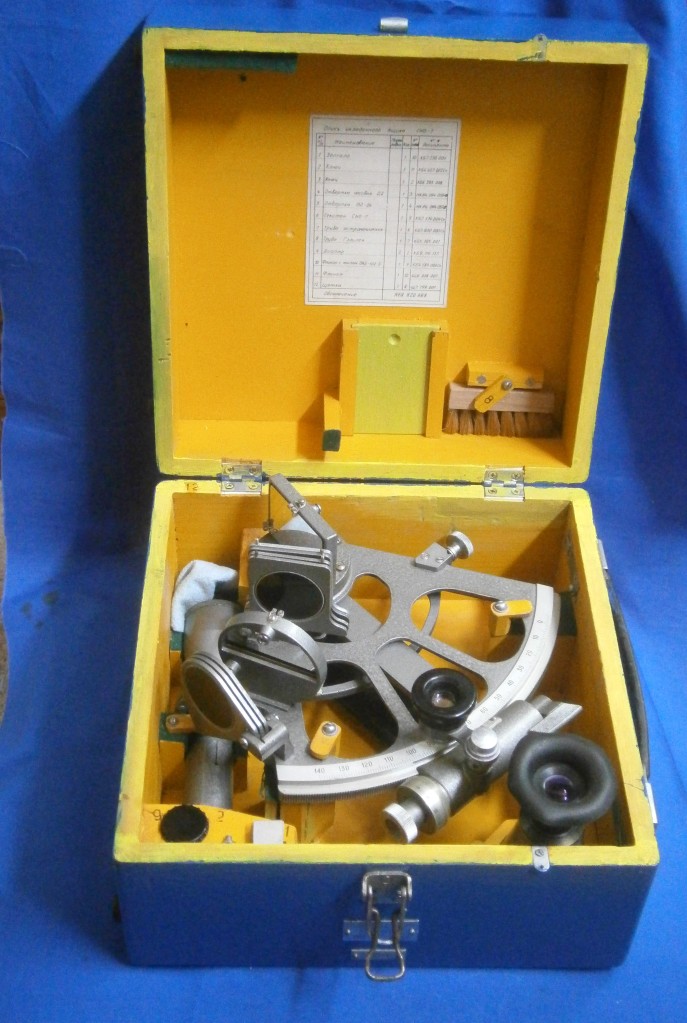
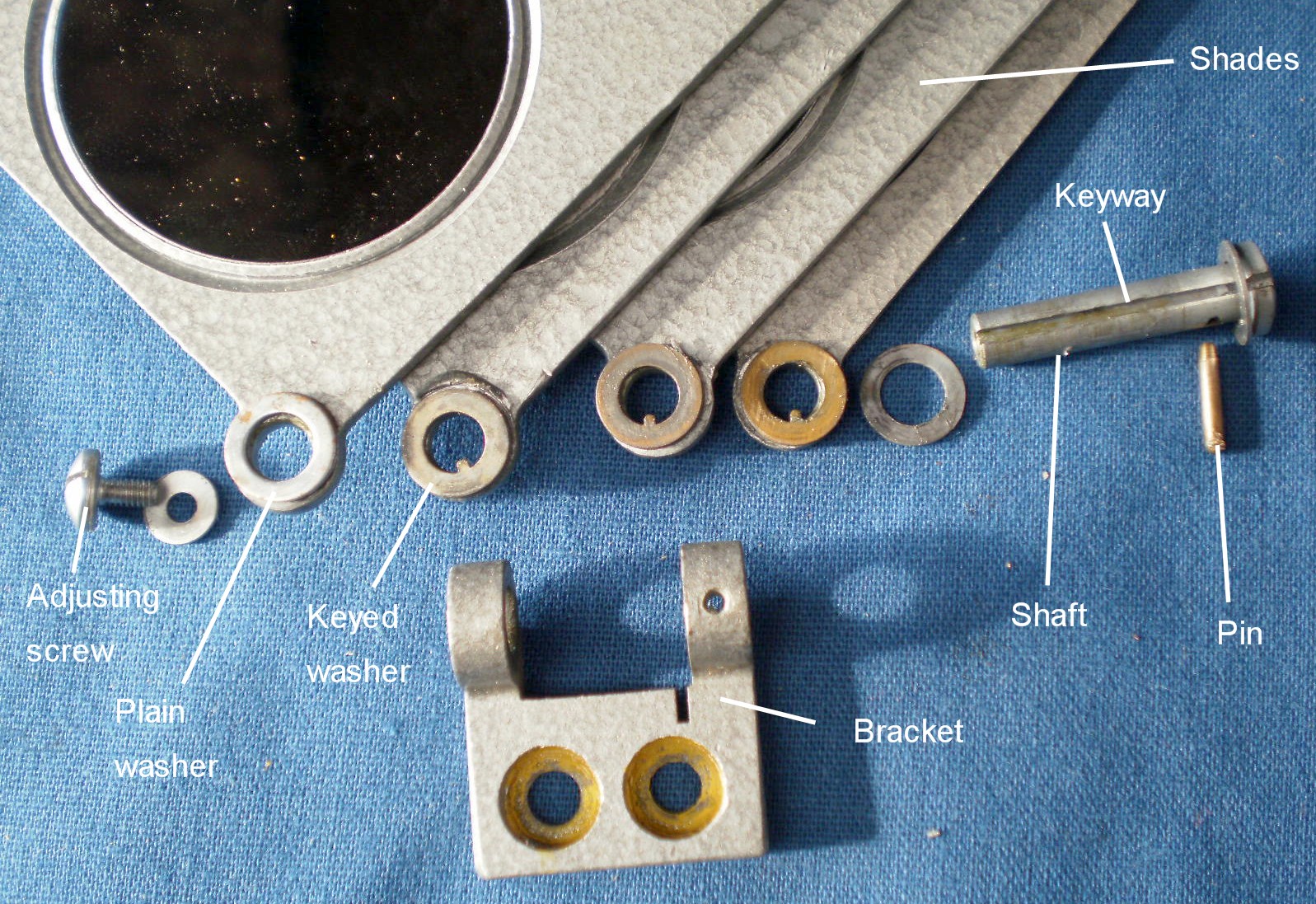
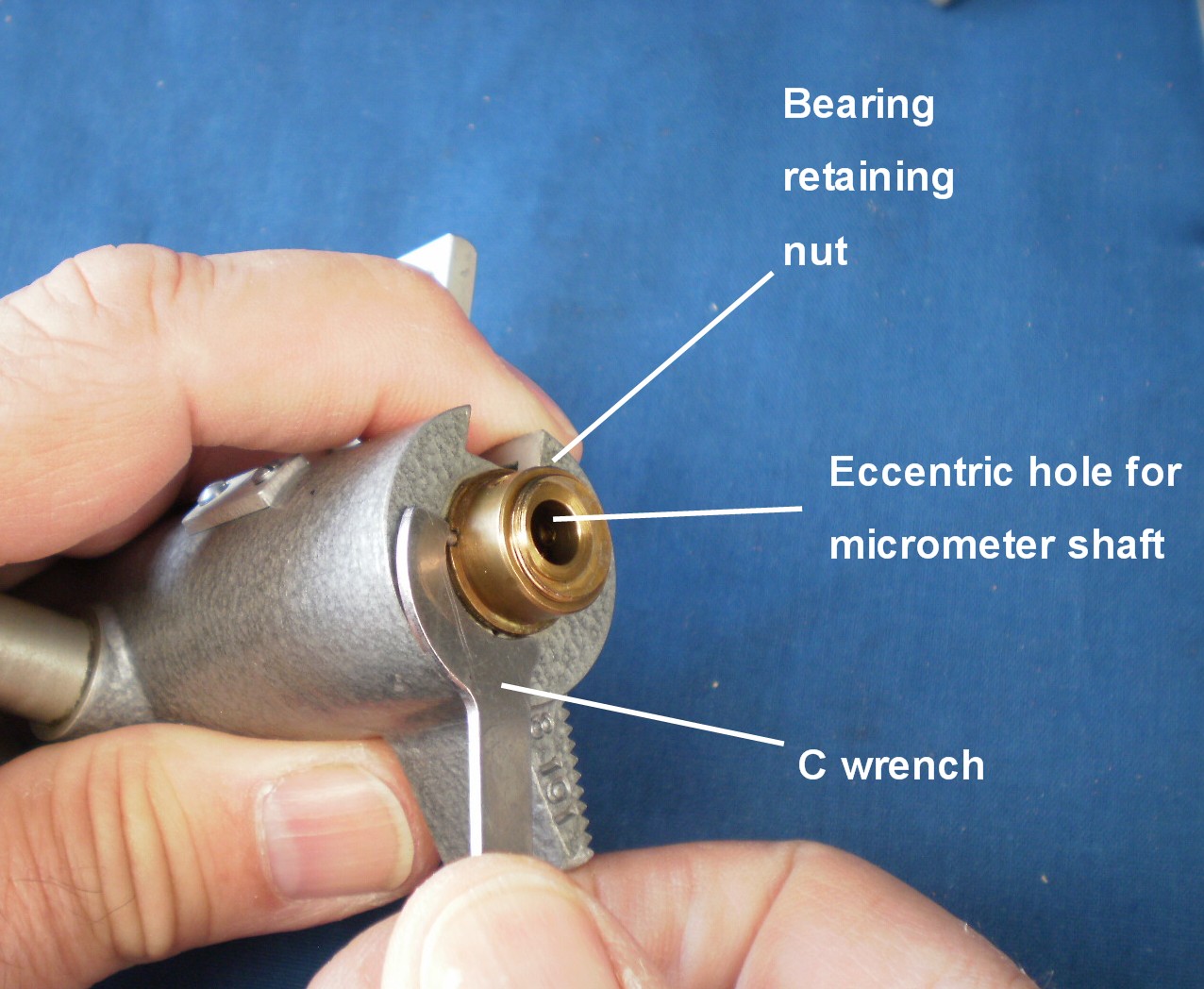

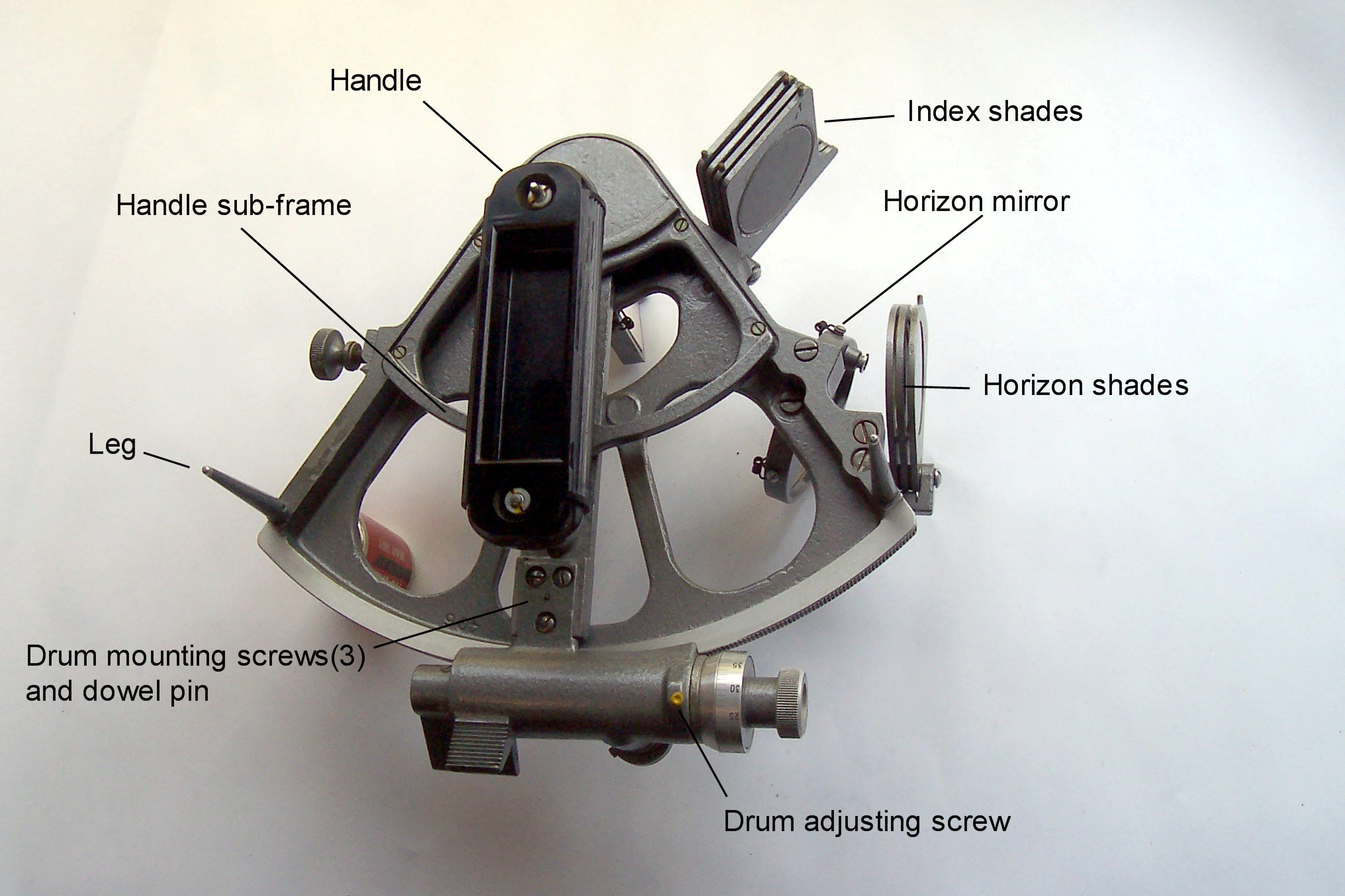
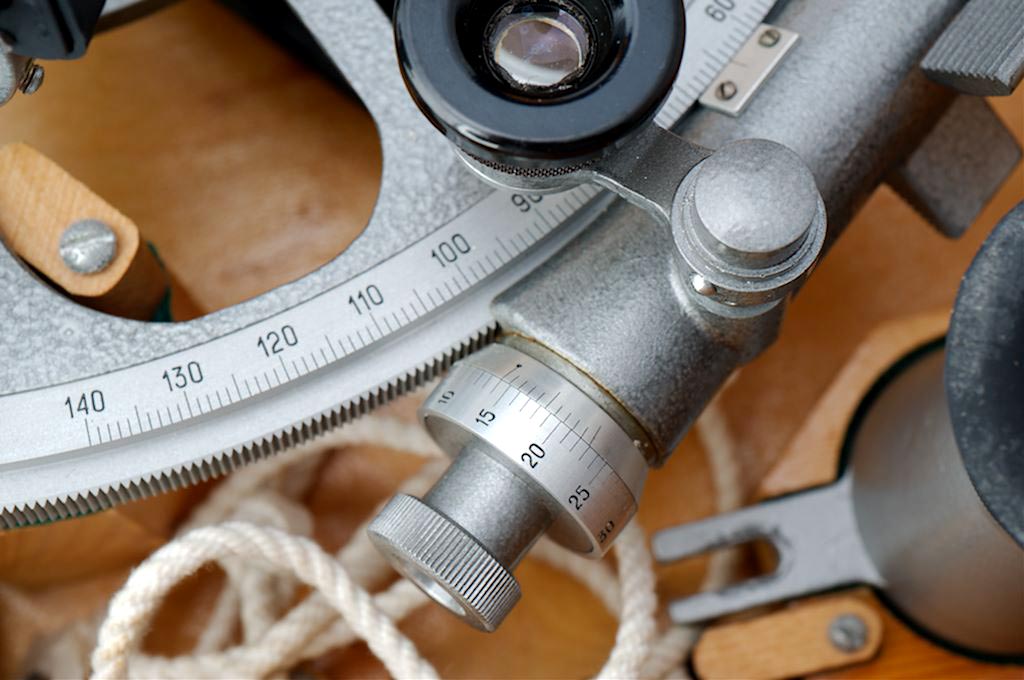
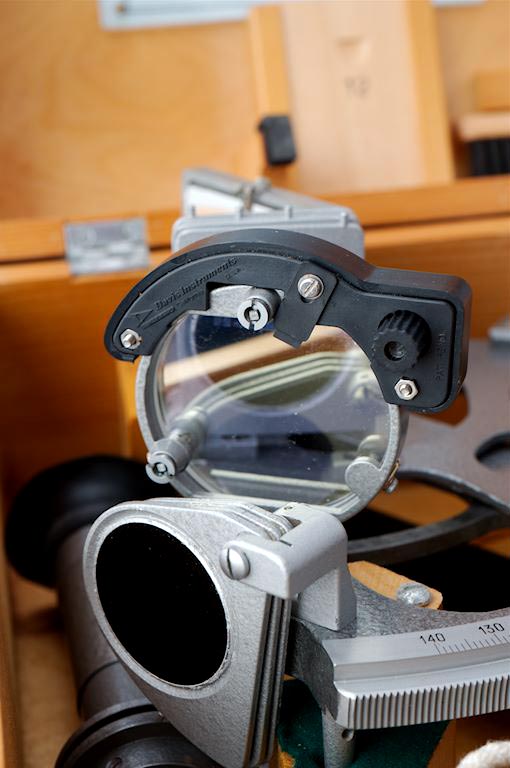
You must be logged in to post a comment.